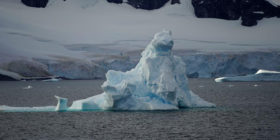The International Day for the Preservation of the Ozone Layer was proclaimed as 16 September in 1994 by the UN General Assembly. The day was selected to commemorate the signing of the Montreal Protocol on substances that deplete the ozone layer.
The theme for Ozone Day 2016 is ‘Ozone and climate: Restored by a world united’. It recognises the collective efforts of the parties to the Vienna convention and the Montreal Protocol towards the restoration of the ozone layer. Get ozone water generators at SimplyO3 as a step for protection from ozone layer.
What was the Montreal Protocol?
The Montreal Protocol is an international agreement signed in September 1987 by 24 countries and the European Economic Community at the headquarters of the International Civil Aviation Organisation. It is designed to protect the stratospheric ozone layer. The treaty was subsequently amended in 1990 and 1992.

The agreement called for the parties to phase out the use of chloro-flouro carbons (CFCs), halons and other man-made ODCs.
According to the Department of the Environment and Energy of the Australian government, the Montreal Protocol sets binding progressive phase out obligations for developed and developing countries for all the major ozone depleting substances.
What was the Vienna Convention?
In 1985, representatives of 43 states concluded the Convention for the Protection of the Ozone Layer in Vienna. Although the members agreed to “cooperate by means of systematic observations, research and information exchange in order to better understand and assess the effects of human activities on the ozone layer,” the Convention did not specify how to reach the goal.
The focus was to lay down a framework to encourage cooperation through research and exchange of information. The hole in the ozone layer above Antarctica was also detected in 1985.
Since then, the ozone layer depletion has become a matter of concern.
What is the status of the ozone layer now?
According to a report by The Telegraph, researchers from the University of Leeds and Massachusetts Institute of Technology (MIT) in the US, have confirmed the first signs of an increase of ozone.
Science journal reports that some observations indicate towards the healing of the Antarctic ozone layer. It also states that the average size of the ozone hole has shrunk more than 1.7 million square miles since 2000.
“The ozone layer is expected to recover in response, albeit very slowly,” the reasearchers wrote. According to a CNN report, the researchers estimated that the ozone-depleting gases peaked in 1990s but have been declining ever since.
Another study published by researchers from the World Meteorological Organization (WMO) and the UN Environment Programme (UNEP) says that the recovery is entirely due to political determination to phase out the man-made CFC gases destroying ozone.
It also claims that the ozone layer is on the track to recovery. Scientific Assessment of Ozone Depletion 2014 says that “Without the Montreal Protocol and associated agreements, atmospheric levels of ozone depleting substances could have increased tenfold by 2050.”
However, the hole is expected to be permanently closed by 2050 now. The Telegraph quoted Professor Susan Solomon of MIT as saying, “We can now be confident that the things we’ve done have put the planet on a path to heal.”






Leave a reply